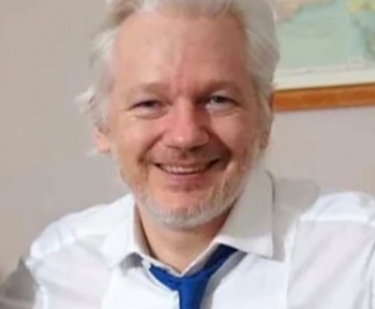

iTWire - Audio shows Assange asked State Dept to help contain damage from 2011 l...
source link: https://www.itwire.com/strategy/audio-shows-assange-asked-state-dept-to-help-contain-damage-from-2011-leak.html
Go to the source link to view the article. You can view the picture content, updated content and better typesetting reading experience. If the link is broken, please click the button below to view the snapshot at that time.

Thursday, 17 December 2020 08:43
Audio shows Assange asked State Dept to help contain damage from 2011 leak Featured
By Sam VargheseThe raw audio of a 75-minute phone call between WikiLeaks founder Julian Assange and Obama era State Department attorney Cliff Johnson in August 2011 gives credence to claims made by the whistleblower organisation that a rogue former employee was behind the leak of unredacted classified State Department cables.
The audio, which was released by the investigative journalism website Project Veritas, was tweeted out by NSA whistleblower Edward Snowden.
The call between Assange and Johnson indicates that the WikiLeaks boss wanted to minimise any harm that could be caused by unredacted material being disseminated.
He told Johnson that the US State Department could organise for an emissary to come to the site where he was under house arrest in London at the time and collect information about the five locations on the Web where the encrypted file in question was being kept along with an encryption key.
Assange accused the rogue employee of wanting to destroy WikiLeaks reputation by releasing the material without any redactions and much before WikiLeaks did.
This is the raw, unedited audio of the over one hour long Assange phone call warning the @StateDept (again) of publication risks, and requesting them to aid in harm minimization. Primary source material. https://t.co/iUTHKBhOZ0
— Edward Snowden (@Snowden) December 16, 2020
He warned Johnson that the encrypted material — which he said was in a mass of files — could be released by the rogue employee within hours or a week.
Assange said he had tried to take legal action in Germany — where the rogue employee was — but had no standing to do so as WikiLeaks did not own the cables.
He urged Johnson to act through the US Government, suggesting that an approach to the rogue employee could have beneficial effects.
Johnson argued that releasing material either way — through the rogue employee or WikiLeaks —- was all the same, but Assange did not agree.
He argued that while WikiLeaks put out material because of its ideological orientation and only after sanitising it on the advice of its media partners, the rogue employee had only one motive, to damage the reputation of WikiLeaks.
Assange, one of Australia's best known hackers, was involved in attacks on several American government organisations in the 1980s, at a time when he went by the moniker Mendax.
He is currently incarcerated in Belmarsh prison in the UK, awaiting a verdict from a hearing held earlier this year to decide whether the UK will extradite him to the US to face espionage charges there over publishing classified information that was leaked to WikiLeaks by an American soldier, then known as Bradley Manning, but now, after gender reassignment surgery, known as Chelsea Manning.
That verdict will be announced in January 2021. The new US president Joe Biden is due to be sworn in on the 20th of that month.
Subscribe to ITWIRE UPDATE Newsletter here
Now’s the Time for 400G Migration
The optical fibre community is anxiously awaiting the benefits that 400G capacity per wavelength will bring to existing and future fibre optic networks.Nearly every business wants to leverage the latest in digital offerings to remain competitive in their respective markets and to provide support for fast and ever-increasing demands for data capacity. 400G is the answer.
Initial challenges are associated with supporting such project and upgrades to fulfil the promise of higher-capacity transport.
The foundation of optical networking infrastructure includes coherent optical transceivers and digital signal processing (DSP), mux/demux, ROADM, and optical amplifiers, all of which must be able to support 400G capacity.
With today’s proprietary power-hungry and high cost transceivers and DSP, how is migration to 400G networks going to be a viable option?
PacketLight's next-generation standardised solutions may be the answer. Click below to read the full article.
WEBINAR PROMOTION ON ITWIRE: It's all about webinars
These days our customers Advertising & Marketing campaigns are mainly focussed on webinars.If you wish to promote a Webinar we recommend at least a 2 week campaign prior to your event.
The iTWire campaign will include extensive adverts on our News Site itwire.com and prominent Newsletter promotion https://www.itwire.com/itwire-update.html and Promotional News & Editorial.
This coupled with the new capabilities 5G brings opens up huge opportunities for both network operators and enterprise organisations.
We have a Webinar Business Booster Pack and other supportive programs.
We look forward to discussing your campaign goals with you.
Recommend
-
 60
60
solidot新版网站常见问题,请点击这里查看。 Solidot 公告
-
 46
46
-
 62
62
-
 67
67
-
 5
5
Microplastics Cause Damage To Human Cells, Study Show...
-
 4
4
Friday, 09 June 2023 09:14 Assange to launch second appeal against extradition after losing first bid Featured By
-
 5
5
Monday, 03 July 2023 10:38 Assange spends another birthday in jail waiting for appeal outcome Featured By
-
 4
4
Thursday, 06 July 2023 12:51 DoJ, FBI 'pressuring British scribes to back Assange prosecution' Featured By
-
 13
13
Friday, 25 August 2023 07:52 Assange backers to hold virtual protest against his extradition Featured By
-
 9
9
Thursday, 21 December 2023 09:07 Assange to get final High Court chance for appeal in February Featured By Sam Varg...
About Joyk
Aggregate valuable and interesting links.
Joyk means Joy of geeK
